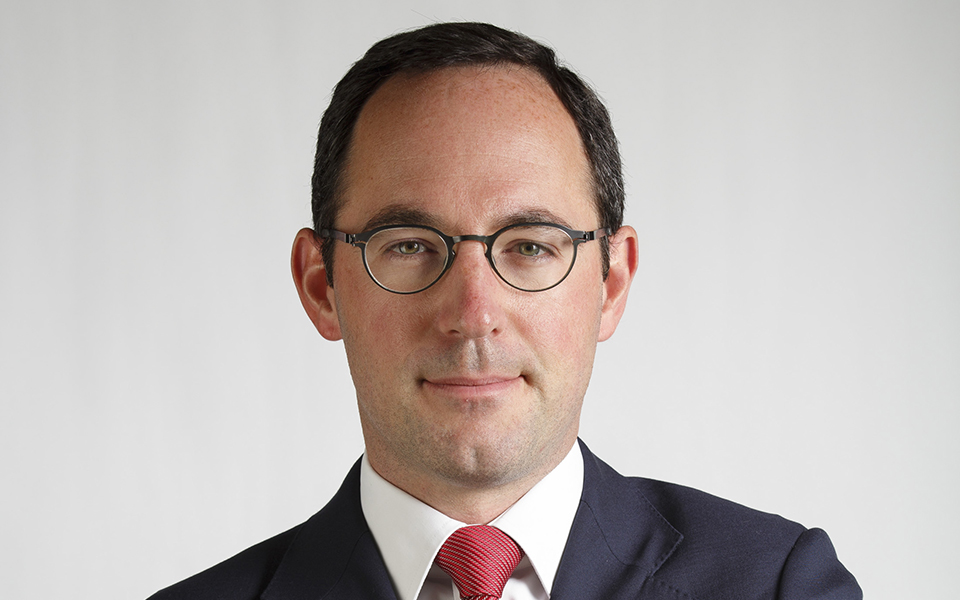The results of HSBC’s latest emerging market sentiment survey, conducted between late January and early March, would have made positive reading for any investors with an interest in some of the less heavily traded currencies.
While respondents to the survey expressed concern at the prospect of rate hikes from developed market central banks, they were extremely bullish on emerging market FX.
There are signs that the storm is passing, as reflected by different volatility measures subsiding
Paul Mackel, HSBC

Some 67% expected EM currencies to appreciate over the next three months, up sharply from 22% in the December 2022 survey.
With elevated risk aversion, the downward pressures on EM FX might have been expected to be more acute. Lower US Treasury yields should be net positive for EM FX, but at the same time heightened volatility and risk aversion were clear challenges.
“Nonetheless, there are signs that the storm is passing, as reflected by different volatility measures subsiding,” says Paul Mackel, global head of FX research at HSBC. “If we are right in this thinking, the next phase of the USD decline is unfolding and an acceleration of portfolio inflows would improve the prospects for a number of EM currencies.”
Since the start of this year, emerging market central banks have appeared to designate 2023 as a year of significant disinflation, with far fewer, if any, growth-reducing hikes. Meanwhile, markets were positioned to price in sizeable Fed cuts at the back end of the year, taking the USD off its highs.
Tentative reports around de-dollarization in Russia and China, and the price action for the USD, are providing an additional tailwind for emerging market currencies.
Fading bullishness
January’s bullishness – prompted by China’s reopening – quickly faded due to the increasing evidence of a stagflationary scenario playing out in the developed world. But David Hauner, managing director head of EM cross-asset strategy and economics for EMEA at Bank of America, reckons sentiment has room to improve.
“China reopening remains a big plus,” he says. “However, for EM FX to fully benefit we need to get through the end of the Fed hiking cycle and we need conviction that the US slowdown will be orderly rather than disruptive. If these pieces of the puzzle line up, EM FX can perform well later this year.”
China reopening remains a big plus… for EM FX to fully benefit we need to get through the end of the Fed hiking cycle
David Hauner, Bank of America

Being positive on emerging markets was one of BNY Mellon’s key views for 2023, on the basis that positioning is very light and valuations are at favourable levels.
Even passive investment back into asset classes such as EM equities and credit will be beneficial for FX, although progress may be slow as much of the flow will likely be hedged at the outset, suggests Geoff Yu, BNY Mellon FX strategist EMEA.
“Finally, EM has been on the sidelines in recent weeks amid concerns over financial stability, but the net result has been a pullback in Fed and developed market interest rate expectations, which means that there will likely be less rate pressure on EM currencies ahead – a reversal of the trends seen last year,” he says.
According to Alex Kuptsikevich, FxPro senior market analyst, by accumulating reserves and reducing public debt as much as possible, larger developing countries have also been able to fight inflation earlier, making the current cycle different from many previous ones.
Phoenix Kalen, director of emerging markets strategy at Societe Generale, is less optimistic, noting a downward shift in investor perception of the growth/inflation mix, expectations of a disorderly US deceleration, and mistaken expectations of an imminent rates easing cycle out of the US later this year.
“The implications from these themes point to high cross-asset volatility, slower global growth, and lower inflation – conditions that tend to be bearish for EM currencies already suffering from unappealing valuations and poor carry-to-vol,” she says. “Additionally, a past source of EM FX resilience in the form of the real policy rate buffer versus the US has substantially eroded over the past year.”
The first half of March saw a sharp rise in the value of the dollar against the Mexican peso, one of the EM currencies most favoured by investors.
Increasing scepticism
Despite the subsequent recovery, there is now more scepticism about EM FX prospects – mostly because recession risks are perceived to be rising, but also because valuations are less appealing than they once were.
That is the view of Ebrahim Rahbari, chief currency strategist at Citi, who says recent financial market turmoil has affected sentiment towards emerging market currencies.
Fragmentation of global supply chains continues to position India, Indonesia and Vietnam favourably
Charu Chanana, Saxo

“There were painful drawdowns, particularly in the context of volatility during periods of acute banking stress and more broadly illiquid and volatile rates markets, but also against the context of greater recession risks,” he says.
In terms of prospects for specific currencies over the coming months, HSBC remains largely positive on Latin American FX, given high yields and the likelihood of political risks fading.
“A stronger China can also have positive implications for a number of southeast Asian currencies via stronger tourism and healthier external positions on the horizon,” adds Mackel. “So we remain relatively positive on currencies like the Thai baht, Malaysian ringgit and Indonesian rupiah.”
The Mexican peso and Hungarian forint have been popular carry trades this year and while positioning has been cut amid the recent turmoil emanating from developed markets banks, it remains relatively heavy with the central banks running high interest rates.
“The South African rand has been much weaker than usual when China improves, due to the former’s energy problems, which leaves it attractively valued in our opinion,” says Hauner. “In Asia, many investors have been using renminbi to fund long positions in higher beta currencies that benefit from China’s opening, such as the Thai baht [from tourism] and the South Korean won [from manufacturing].”
Charu Chanana, market strategist at Saxo agrees that Thailand is a key story due to its heavy dependence on international tourism. “We expect Chinese outbound tourism to pick up substantially in the second half of the year and that will bring tailwinds to Thailand,” she says. “Meanwhile, fragmentation of global supply chains continues to position India, Indonesia and Vietnam favourably.”
Central banks in central and eastern Europe are maintaining a relatively hawkish tone compared to global players, with comments about future rate hikes being a distinct possibility. The Polish zloty remains the slight outlier with the National Bank of Poland being more dovish, a fact that is weighing on the zloty when compared to peers such as the forint or the Czech koruna.
The peso has proved quite an outlier in EM FX, with Banxico making quite clear its intentions to stick with the Fed with regards to monetary policy
Rob Hale, Lloyds Banking Group

Earlier this month, the South African Reserve Bank surprised markets with a higher than expected rate hike backed up by some hawkish rhetoric, to correct what it saw as market mispricing and to sharpen the focus on bringing inflation back under control.
“The peso has proved quite an outlier in EM FX, with Banxico making quite clear its intentions to stick with the Fed with regards to monetary policy, a policy that has seen it outperform in times of US hawkishness and remain resilient in times of US dovishness,” says Rob Hale, managing director and head of flow sales and trading at Lloyds Banking Group. “As such, it has retained its status as a top performer in EM FX versus EUR and USD.”
The narrative around the Mexican peso is that there is a structural benefit from the trend for ‘friendshoring’, while tight fiscal and monetary policy limit the downside.
According to Rahbari, themes strongly outweigh idiosyncratic stories, with the EM FX scoreboard dominated by currencies that have high carry and appealing valuations. “This mostly explains why the forint and the Colombian peso have outperformed,” he concludes.




